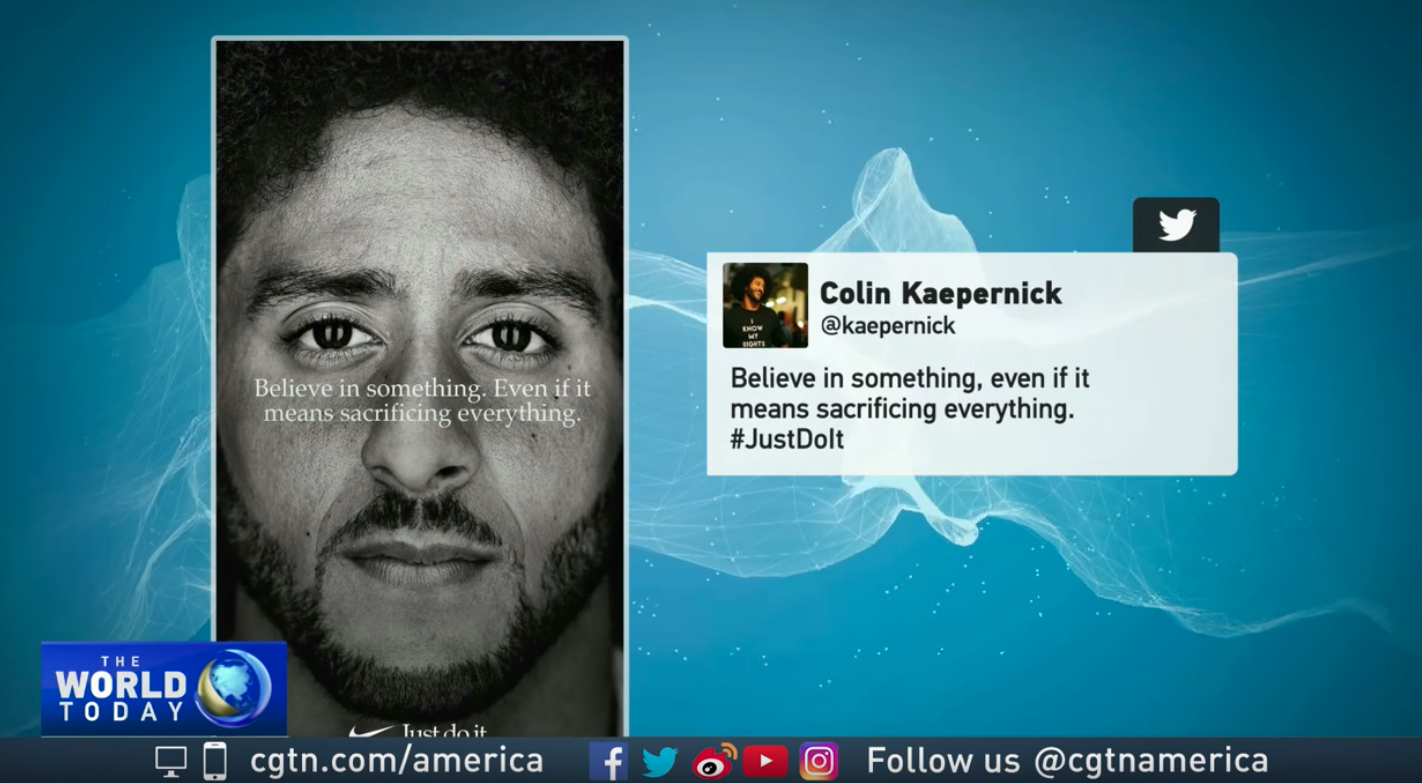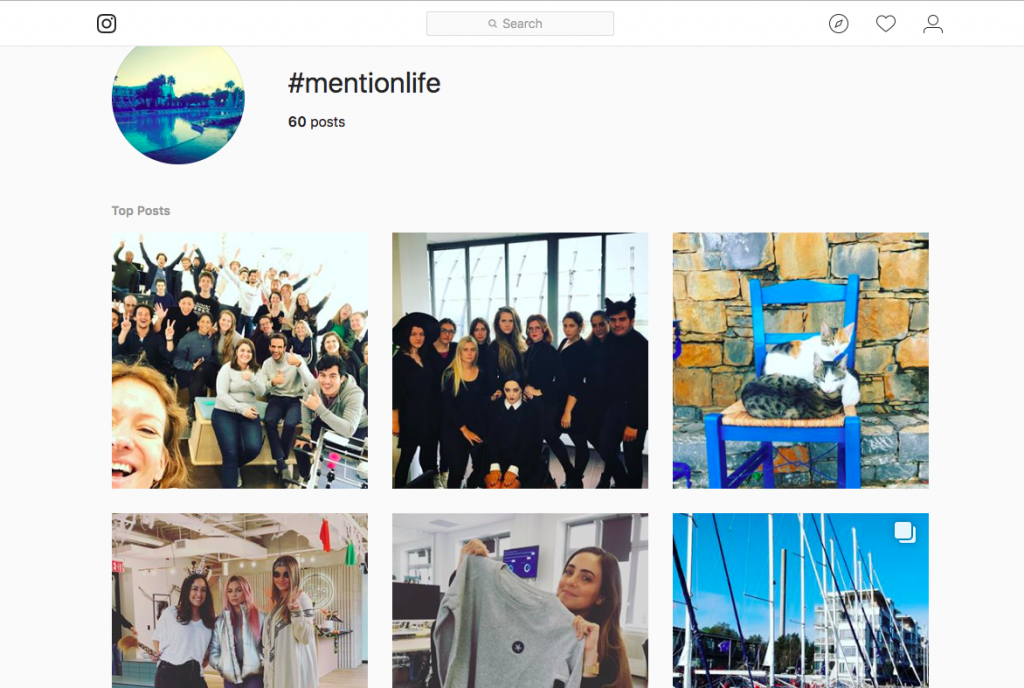Recently, Mynewsdesk gathered four experts to give their best advice on brand storytelling; the dos and don’ts you really need to know about.
The panelists, being all communication pros, came from Electrolux, Scandic, Mapillary, and Mention – who all brought their invaluable experience to the table.
The focus of the webinar was on what brands can do to succeed in brand storytelling.
*This is part of an ongoing PR-focused series, brought to you by our friends at Mynewsdesk, the leading PR management solution in the Nordics.
![]()
Maddy Savage, freelance journalists for BBC, Monocle, Time Out, and NPR, introduced the session. Maddy explained that there has been a definite shift from brands and organizations focusing purely on external marketing, advertising, and traditional PR to increasingly creating their own content alongside this.
She then asked the panelists to provide their point of view on how they think the landscape has changed over the last few years.
1. The flora of channels and democratization of the media landscape
According to Heidi Wold, communications director at Scandic, it’s obviously the flora of channels that have popped up lately and the democratization of the media landscape.
She explained that in the past there were only a few media outlets, which had all the power, and only companies with big media budgets managed to get their story out. However, today this is not the case anymore.

Wold said many brands are able to start from nearly nothing and build only on social media, for example, and create big global movements. In her opinion, that’s a significant game changer.
Because of that, the role of communicators has become much more specialized.
“We need to be on point. And also a big change…is that you can start a global crisis from a single post in social media,” she warned.
Communicators now need to be aware of their surroundings a lot more than they ever did before, she added.
2. The power of storytelling to connect and engage with consumers
Sandra Carpenter, corporate communications specialist at Electrolux, said that thanks to the digital world, companies now need to increasingly differentiate their brand from the competition and find unique ways to stick out.
And Carpenter believes that storytelling is a great way to do this.
“You can make connections with consumers, create conversations and community in a completely different way than say 10 or 20 years ago.”
However, as she explains, it also “puts pressure on you to live the brand you want to put out to the world.”
If you do it well, though, she believes that it really pays off.

3. The outcome of missing out on brand storytelling
Maddy challenged the speakers by saying that it sounds easy when they put it like that, but is it really? If you are a smaller brand what happens if you don’t get involved?
Wold answered saying that if you don’t get involved, nothing will happen, basically!
“You will not grow your business; you will be in a vacuum on your own.”
So based on that, Wold means that all brands and organizations, irrespective of size and resources, need to get involved.
As a result, she tried to reassure and encourage the rest of us by saying that it doesn’t need to be difficult.
“It’s really about understanding where your customers are, get the customer journey that they are in, and identify the touchpoints where it’s important to reach them, where they make their purchasing choices,” Wold concluded.

4. Common mistakes in brand storytelling
Following on Wold’s recommendation, Savage then asked the panel in what situations brands fail in storytelling.
As people are often kind of scared about starting out, Savage asked the panel what the common mistakes and pitfalls are to avoid.
The first thing to remember, according to Sandy Errestad, head of communications at Mapillary, is that “When you express your brand on social media, it shouldn’t be just a one-way dialogue.”
If you put down the core values of your company and embody those values, Errestad explains, it will really guide everything you do in your business, both regarding sales and communications.
So you need to have the answer to “What does your company stand for?” and “Why are you even in business at all?” before getting started with brand storytelling.
In Errestad’s opinion, “The biggest mistakes that brands do today is that they are scared to take a stance because they don’t want to alienate people.”
Stepping in on this point, Sandra Chung, Head of Content at Mention, pointed out that communicators tend to overcomplicate brand storytelling. That they spend too much time creating a campaign or enlisting their entire video and design team to create a video. Yet in her opinion, it doesn’t need to be that difficult to get started.
“Social media has made it a lot easier nowadays with things like Instagram Stories and Facebook Live. It doesn’t necessarily have to be always perfect or super polished. It can be quite simple. The basic idea is that you want to show who is behind your brand and what you stand for,” Chung emphasized.
5. How much time to dedicate to brand storytelling
Savage said it’s straightforward for people to say that we will start sharing stuff on social media and improve the content on their website. But for a lot of brands, she rightly highlighted that there is a worry about how much content they have to produce as well as how much time they need to dedicate to this.

“We’ve all seen Twitter accounts where there are 14 followers, and the last post was from two years ago. Everybody knows that looks bad for a brand. So how do you get the balance right between getting going and having a plan?” Savage asked.
According to Wold, the first mistake is to look at it as a chore.
“This is another tool for selling. Selling is not a dirty word,” Wold confirmed.
Wold explained that communication is just another way to sell. If you have a lifestyle brand, then you might need your marketing to look more polished. But if it is something else that you are selling, you need to understand where your customers are, Wold reiterated.
“Maybe shooting out different types of tweets isn’t going to help you if you manufacturing and selling bicycles. Then you should probably just hang out in forums. So you have to find out where your customers are, what type of content they like and add it to your toolbox for selling,” she added.
On this point, Errestad from Mapillary agreed. She said that a lot of organizations make the mistake of seeing PR, branding, and comms as something separate from the business, like an add-on. Nevertheless, communication is just like sales.
“You don’t think one sales push will be enough for your business to thrive. It has to be an ongoing job. And it’s the same things with comms, and the two should be integrated,” she said emphatically.
If you have a close relationship with your customers, Errestad believes you can utilize that as a huge resource in your communications and brand story.
6. Putting together a brand storytelling plan
Based on Chung’s opinion, communicators should start by really understanding what their audiences are looking for and what they want.

“For us at Mention, social listening is a huge part of that. So we monitor everything that is related to our company, industry, and competitors. We know what our customers are saying about a specific product feature, for example, or how they feel about a campaign in general.”
As a result, Chung believes a good starting point is to base your communications around what your audiences are talking about.
7. The benefits of employee-generated content
The conversation then shifted to internal communications and how the lines are becoming increasingly blurred.
Carpenter said that her team at Electrolux is increasingly working with the external communications team to get the message out.
“A good story is a good story, no matter what,” said Carpenter.
If it works internally, it should work externally too.
For internal communications, Carpenter said it’s essential that employees understand your company purpose. Her advice for others is to share the corporate values internally first, refine the key messages based on how people receive it and then take it externally to see what resonates with people.
Being a journalist, Savage added that having employees who understand the goals and purpose of a business is crucial. Because whoever a journalist interviews in a company, they need to understand what the company message is.
“It shouldn’t be just about one spokesperson. Because we are all communicators nowadays on our own social channels,” Savage explained.
8. Good examples of brand storytelling
Errestad reemphasized that brands need to take a stance because we are living in an increasingly polarized world.
Her best example was of Nike that ran an ad with an NFL player who took a stand during a game on how minorities are being treated in the US.
“People went mental and started burning their sneakers online on social media. But Nike’s revenue shot up by 15% and they had the best month ever in revenue. I believe the tagline for the campaign was something along the lines of ‘Stand for something even if it means sacrificing everything.’”
According to Errestad, the Nike example is a perfect example of how a company manages to fit in the debate and be super relevant.

Carpenter from Electrolux liked Volvo’s brand promise that no one will be killed by one of their new cars by 2020. By trying to deliver on a good safety promise, they stick out as a brand you can trust.
Chung brought up Mention and explained what they do to showcase the faces behind their company. Mention has a company slack channel called #MentionLife where they document their monthly events, their yearly retreat, and everyday life at the company. The content team gets employee consent first and then republishes the content on their Instagram stories. According to Chung, it’s an effective way to get employee-generated content.
“The idea is to showcase the people and personality behind our product and brand.” she added.

On that point, Maddy explained that content creation doesn’t need to be this chore where you are sitting down trying to find content – quite the opposite! “Sometimes the content can come to you,” she said. And showcasing how fun it is to work at a company also contributes to building the company image.
Rightly so, Heidi underlined that the organization itself outnumbers the number of communicators working for it. And that finding stories by chasing people is usually very difficult. However, if you can make it possible for your employees to bring the stories to you, then it’s much easier to get them out. In short, it’s about creating the right environment to allow employees to express themselves.
9. The role of PR and how it taps into brand storytelling
Moving on, the topic of discussion then went to PR and journalism and why it’s still important from a brand storytelling perspective.
For Errestad, PR becomes a stress test for how good your brand is.
“If you can get journalists to care about your story, there is a huge chance that customers won’t care about your story either,” she underscored.
She gave a personal example of when she worked for an international money transfers company. They looked at the costs and time savings regarding money transfers and then looked at how much the banks were charging. Their company then turned this into a story that banks were “ripping off” consumers.
According to her, it was a really compelling narrative versus ‘we do money transfers,’ which no one cares about. It was not only something they could pitch to journalists, but also a narrative that appealed to customers.
It’s critical to get the third-party validation from PR, but it also works as a stress test regarding how strong your brand is, Errestad ended.
Key takeaways from the webinar
In summary, here are the panelists set of recommendation:
- Define the purpose and values of your business, as this will guide all your communications.
- Involve your employees in helping you create and share stories.
- Communications isn’t a one-way dialogue. Listen, engage and interact with your customers.
- Understand who your customers are, where they are in their journey and identify the various touchpoints where you can reach them.
- Communication, PR, Branding is not an add-on to your business and should be integrated with your sales process. Brand storytelling is just another channel for sales.
- Brands should take a stand and have an opinion.
- All brands should do PR as a stress test to evaluate how relevant their brand story is.
Don’t miss out! Listen to these four experts give their advice on brand storytelling by following this lively discussion here.
If you have any particular questions you would like the speakers to answers, please feel free to contact me. Need help with managing your PR strategy more effectively? Learn more about what Mynewsdesk can do for you by clicking below.







